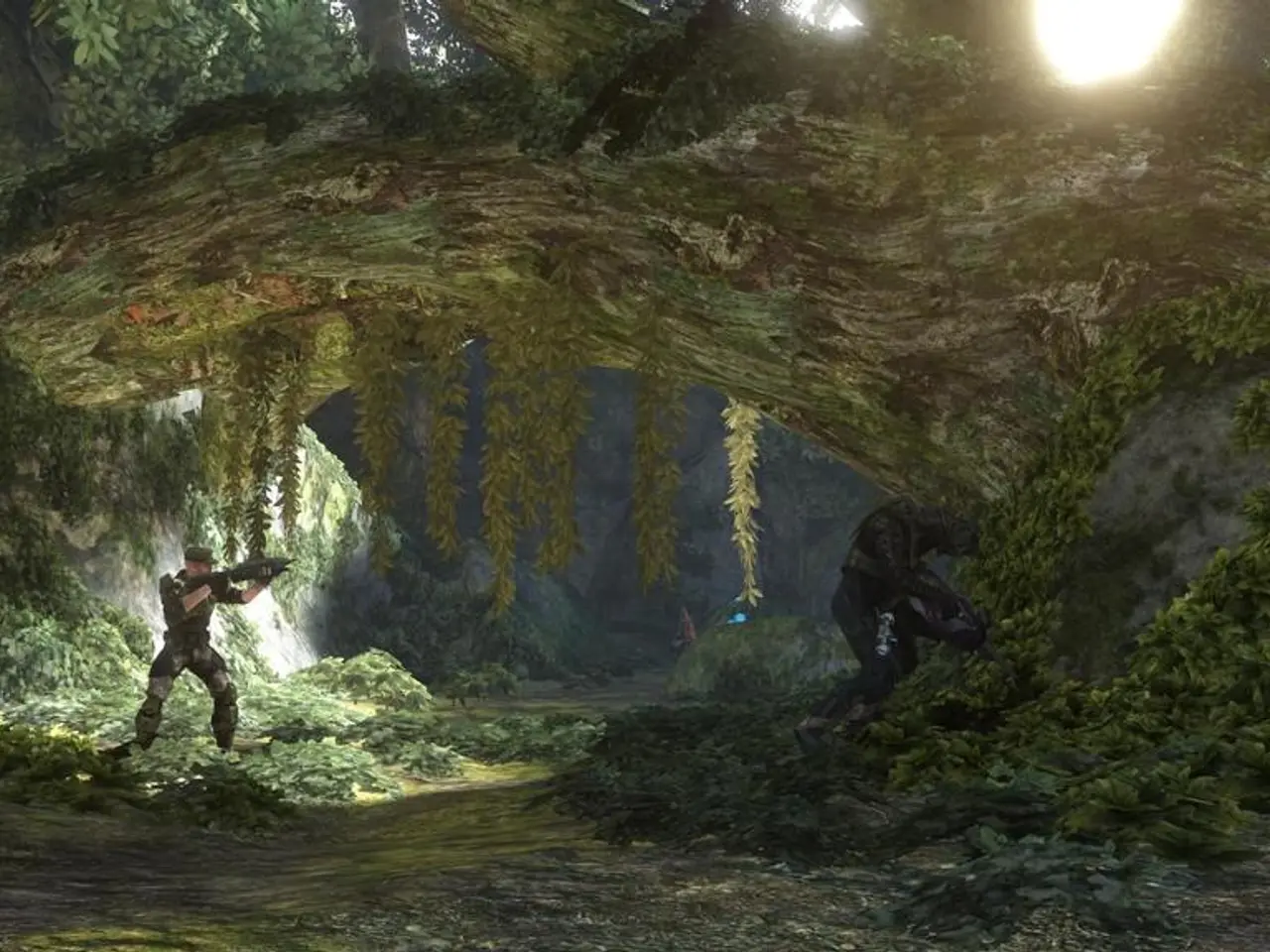Gaming industry's creative predicament encapsulated in Sony's Horizon legal dispute
The global games market, valued at an estimated $188 billion in 2024, is a behemoth, albeit one with slowing growth at a modest 2.1%. However, it's not just the numbers that are causing concern; the industry is grappling with creative stagnation, a predicament that has been exacerbated by risk-averse business practices, market overcrowding, and the challenges introduced by new technologies like generative AI.
This creative stagnation is not an isolated issue. Cases of plagiarism, such as the Palworld AI plagiarism controversy and the ongoing Light of Motiram case, are just the tip of the iceberg. The Light of Motiram case, where Chinese publisher Tencent is being sued by Sony for alleged similarities to the Horizon franchise, is a stark reminder of the problem.
Publishers often focus on established franchises and live services to secure predictable revenue, rather than investing in new IPs or innovative gameplay. This overexpansion and competition with one's own products can dilute focus and creativity, as seen in Riot Games' ecosystem where multiple titles cannibalize attention and resources.
The ethical and creative concerns around generative AI use are another factor. The controversial use of AI in games like The Alters has raised fears of automation suppressing human originality. Despite its creativity, the game was criticized for employing generative AI without transparency.
However, innovation persists, especially in smaller studios and through conscientious AI use and new business approaches. Empowering independent studios as incubators of innovation is a potential solution, as much fresh creativity currently originates outside major corporations. Balanced integration of AI as a tool that supports but does not replace human creativity, with transparency to maintain player trust, is also crucial.
Diversification of business models beyond live services and sequels is another key to breaking the cycle of 'clone, rinse, repeat'. Complete, story-rich single-player games that avoid predatory monetization could provide a breath of fresh air in the industry. Industry willingness to accept financial risks on new and experimental projects is also essential to prevent entrenched creative repetition.
Players, too, have a role to play. By pre-ordering sequels and rewarding safe familiarity, they are partly to blame for the cycle of clones. Genuine risk, bold new genres, and games that surprise and disrupt are rare in the current gaming landscape.
Despite the challenges, there are glimmers of hope. Games like Blue Prince or Clair Obscur: Expedition 33 are precious exceptions in a sea of photorealistic open worlds and sprawling skill trees. What sets Horizon apart is its use of nature documentaries and real-world tribal cultures mixed with sci-fi tropes. Its defined visual style and ambition made it a hard game to clone, but time and money seem to have caught up with Horizon, making it easier for developers to riff on its art and ambition.
In this environment, it's easier for companies to clone successful games rather than innovate. The root issue of games being cloned is deeper than just the Horizon clone case; it's a symptom of creative stagnation in the gaming industry. As the industry navigates these challenges, it's crucial to remember that innovation and originality are the lifeblood of any creative industry, and the games industry is no exception.
References:
- The Verge
- Polygon
- VentureBeat
- Gamasutra
- In the global games market, the increasing use of generative AI is causing concern among artists, as fears of automation suppressing human originality arise.
- Publishers often prioritize established franchises and live services over investing in new IPs or innovative gameplay, contributing to the issue of creative stagnation.
- Smaller studios and conscientious AI use are key drivers of innovation in the gaming industry, as they often originate fresh creativity outside major corporations.
- The controversial use of AI in games like The Alters has been criticized for lack of transparency, raising ethical concerns about its impact on human originality.
- Diversification of business models is essential to break the cycle of 'clone, rinse, repeat', with single-player games that avoid predatory monetization offering a breath of fresh air.
- Games like Blue Prince and Clair Obscur: Expedition 33 are exceptions in the gaming landscape, characterized by unique visual styles and challenging conventions.
- Player demand for sequels and safe familiarity can partly be blamed for the cycle of clones in the industry, making genuine risk and bold new genres rare.
- The Light of Motiram case, where Tencent is being sued by Sony for alleged similarities to the Horizon franchise, serves as a stark reminder of the ethical and creative concerns around plagiarism in the industry.
- The gaming industry, just like any other creative industry, thrives on innovation and originality, and it's crucial to encourage and support these qualities to overcome creative stagnation.




